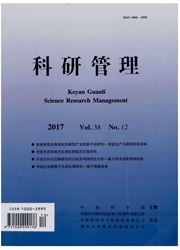

 中文摘要:
中文摘要:
基于Cressey(1953)的舞弊风险理论,本文归纳出与公司违规可能有关的压力、机会以及理性变量,以2000—2008年间被证监会查处的220家(430次)A股违规上市公司以及相应的配对样本为研究对象,通过单变量分析和条件Logistic回归分析建立了违规判别模型。得出的结论主要有:压力变量方面,财务稳定性比率、总资产增长率、资产负债率高的公司易发生违规;自由现金流、总资产周转率、国有股比重、ROA高的公司不易发生违规。机会变量方面,董事会会议频繁、董事长和CEO两职合一的公司易发生违规。理性变量方面,被出具标准审计意见类型、应计利润率高的公司不易发生违规,审计事务所变更的公司易发生违规。在建模样本和检验样本中,模型的准确率分别为81.06%和80.62%。
 英文摘要:
英文摘要:
Based on Cressey' s (1953) fraud risk theory, the proxy variables for pressure, opportunity, and rationalization related to corporate violations are summarized. With the case study of 220 A share public firms with 430 times violations found by CSRC and matched samples in the period of 2000 - 2008, a diseriminant modeling is built by univariate analysis and conditional Logistic analysis. The findings are as follows: in terms of pressure proxy variables, the finns with high financial stability, assets growth, and leverage are prone to violations. In terms of opportunity proxy variables, firms with frequent board meetings and a dual structure are likely to violate the regulations. In terms of rationalization proxy variables, firms with qualified audit opinion and high accrual ratio are unlikely to break the rules. Auditor change induces firms to violate the rules. The precision of the models is 81.06% and 80. 62% for original and test samples, respectively.
 同期刊论文项目
同期刊论文项目
 同项目期刊论文
同项目期刊论文
 期刊信息
期刊信息
